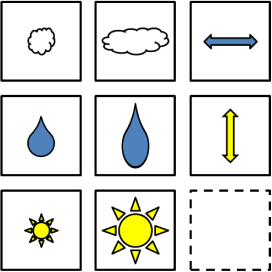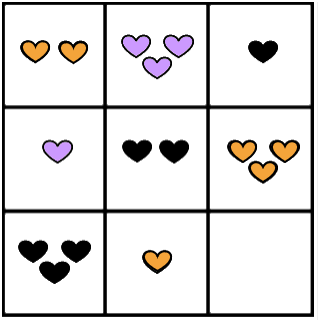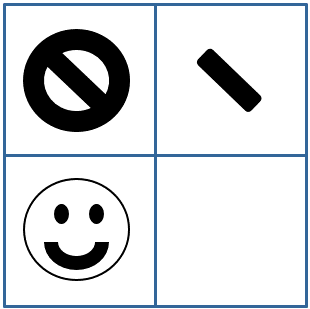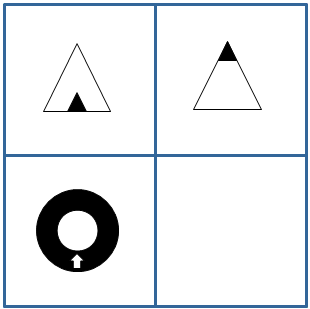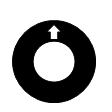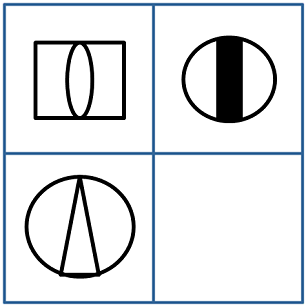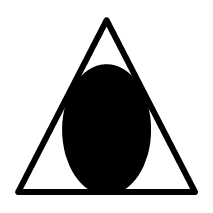The Coloured Progressive Matrices Test (CPM) challenges your logical thinking with visual puzzles that assess your ability to recognize patterns and solve complex problems. Known for its non-verbal format, the Coloured Progressive Matrices test offers a fair, unbiased measure of reasoning skills. This test is an essential tool for anyone preparing for cognitive assessments, offering insights into your cognitive abilities.
What is the Raven’s Coloured Progressive Matrices Test (CPM)?
The Raven Coloured Progressive Matrices (CPM) test is an untimed, non-verbal assessment designed to evaluate problem-solving and abstract reasoning abilities. Typically completed in 15-20 minutes, the focus of this coloured progressive matrices test is on accuracy rather than speed. Initially developed for children aged 5 to 11, the elderly, and individuals with cognitive impairments, it is now widely used in educational, clinical, and professional settings. By relying on visual patterns instead of language or cultural knowledge, the coloured progressive matrices test offers a fair and accessible measure of reasoning skills for a diverse range of test-takers.
The test consists of 36 questions divided into three sections: Set A, Set Ab, and Set B, with each set progressively increasing in difficulty. What distinguishes the coloured progressive matrices test is its use of coloured patterns to visually engage participants, while the final questions in Set B are presented in black and white to challenge those with higher reasoning abilities.
Looking to learn more about Raven's Standard and Advanced Matrices Tests? Visit Raven's Progressive Matrices
Raven's Coloured Progressive Matrices Sample Questions
Did You Know?
This kind of puzzle, where every row and column has to have each shape exactly once, is called a Latin Square.
It's like Sudoku, but with pictures!
Did You Know?
The last three questions are called analogies.
An analogy is when you explain something new by comparing it to something you already know - like saying "your brain is like a computer because it stores information and helps you solve problems." So, the word analogy means comparison or similarity.
In analogy questions, the pattern in the first row has to be similar (or analogous) to the pattern in the second row.
Enhance your skills for Raven's SPM & APM with expert practice tools!
Access proven tools with JobTestPrep and prepare with confidence.
Read Users' Success Stories About Our Raven's Progressive Matrices Prep
Here are Five Tips to Ace the Coloured Progressive Matrices Test:
- Practice Visual Puzzles: Familiarize yourself with visual pattern recognition puzzles. The more you practice, the quicker you’ll get at identifying logical patterns and missing elements, which is key to succeeding on Raven's Coloured Progressive Matrices.
- Work on Timing Without Rushing: Even though the CPM is untimed, it’s important to strike a balance between accuracy and speed. Take your time to understand the patterns, but practice under light time constraints to ensure you don’t spend too long on each question.
- Start with Easier Problems: Focus on mastering the easier patterns in Set A and Set Ab before tackling the more complex ones in Set B. Building confidence with the simpler questions will help you handle the more difficult puzzles.
- Eliminate Wrong Answers: First Instead of immediately searching for the correct answer, try eliminating the options that don’t fit. By ruling out incorrect choices, you can focus on the most likely solution and improve your accuracy.
- Stay Calm and Focused: The test increases in difficulty, so don’t be discouraged if you struggle with later questions. Stay calm, focused, and don’t rush—your ability to maintain concentration is just as important as your reasoning skills.
Sharpen your problem-solving with Our Raven's Progressive Matrices Test PrepPack!
With decades of proven experience, JobTestPrep helps you succeed in Raven's Test. Access expert tips, detailed solving strategies, and practice on hundreds of unique matrices—all for only £49.
Interpretation for Raven's Coloured Progressive Matrices Scores
The test compares each person’s score to others of the same age, placing them in a percentile rank—for example, scoring in the top 25% means they performed better than most people their age. A higher score on the Raven’s Colored Progressive Matrices Test indicates strong problem-solving skills, while a lower score may suggest challenges in these areas compared to the examinee's age group.
This test is often used in schools and medical settings to assess cognitive development, identify gifted students, or detect learning difficulties. Since many factors can affect test results, such as focus, anxiety, or previous experience with similar tasks, scores should be interpreted carefully to get a full picture of a person’s abilities.
Coloured Progressive Matrices Test FAQs
Scores are interpreted based on raw score, percentile rank, and age-based norms, where higher scores indicate stronger cognitive ability. It is widely used in education, neuropsychology, and special education for identifying giftedness, learning disabilities, and cognitive decline.
The Raven’s Colored Progressive Matrices (RCPM) test is used to assess non-verbal reasoning and fluid intelligence, particularly in children, older adults, and individuals with cognitive impairments. It helps identify cognitive strengths and weaknesses, diagnose learning disabilities, evaluate neuropsychological conditions, and screen for giftedness.
We at JobTestPrep find the assessment tests world highly diverse and fascinating. If you are looking to deepen your knowledge in the aptitude tests world, or you want some extra practice before your test, we've got you covered!
Check out these fantastic free practice tests (all are completely free):
Free Aptitude Test | Free Psychometric Test | Free Numerical Reasoning Test | Free Verbal Reasoning Test | Free Cognitive Test | Free Critical Thinking Test | Free Abstract Reasoning Test | Free Spatial Reasoning Tets | Free Personality Test | Free Inductive Test | Free Mechanical Reasoning Test

